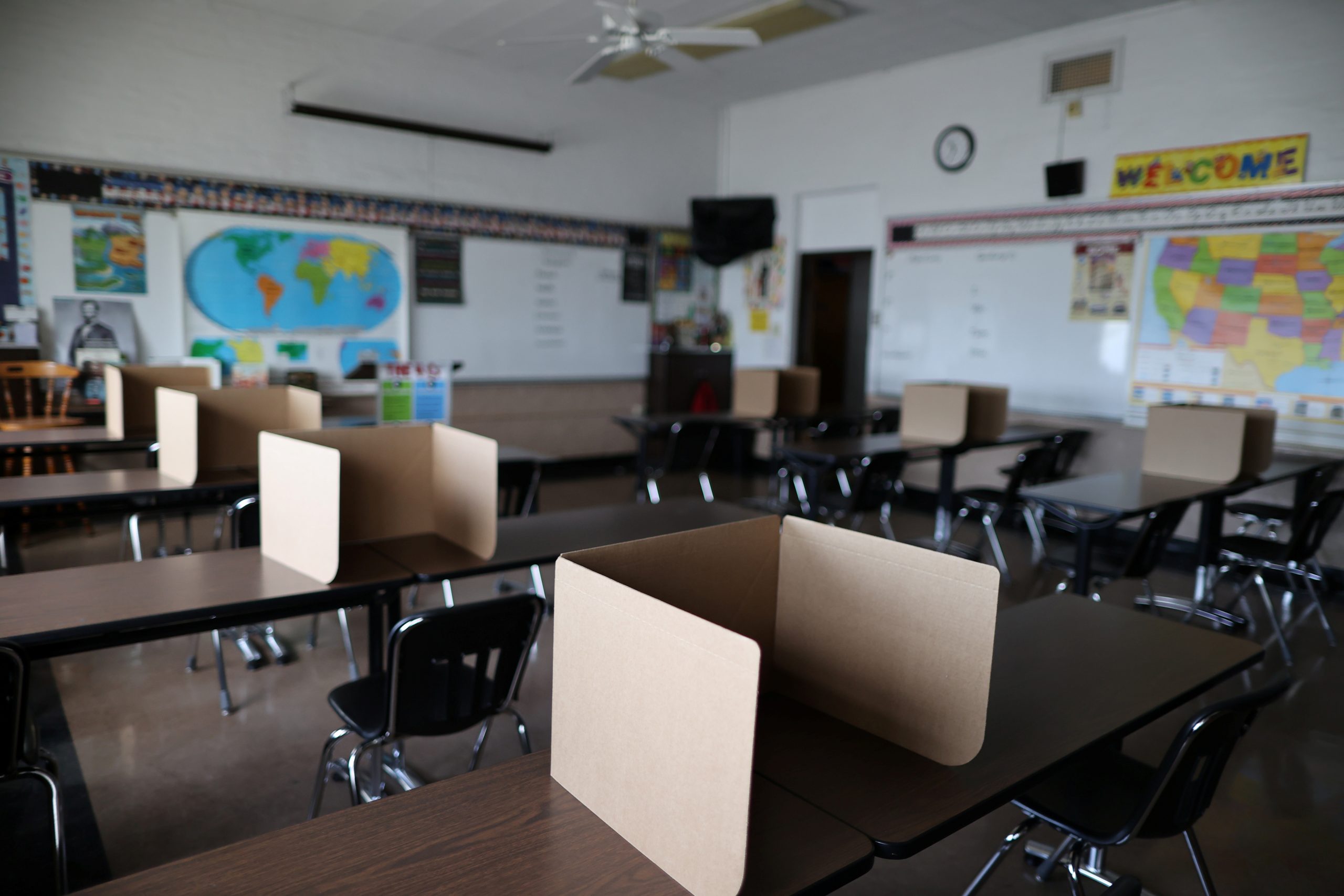Lockdowns have led to a dramatic loss in learning among America’s children, according to a new report that calls for getting children back into schools.
“The recommendation is to open schools and bring kids back into the classroom as quickly as possible,” said John Bailey with the American Enterprise Institute, one of the sponsors of the report, according to Fox News on Thursday.
The report examined the results of 130 studies in an effort to calculate the damage from what has been, for some students, a year of no in-person classes.
“It is vitally important to weigh the public health benefits of school closures against the academic and social-emotional costs suffered by students, families and society as a whole,” the report said.
The report said it did not take long for remote learning to go wrong. It said that in one analysis by Boston Consulting Group and Common Sense Media, by May 12 — roughly two months after mass closures hit — “parents reported only 4.2 hours of live virtual contact between their children and teachers over the previous seven days.”
In a December study, “22 percent of households earning less than $22,000 reported no live contact with their teachers,” the report said.
Citing a model developed by the University of Pennsylvania, Northwestern University, University of Amsterdam and Yale University, the report shared that group’s conclusion that “learning gaps grew during the pandemic. Our model also predicts that wider achievement gaps will persist until children finish high school, suggesting that children’s long-term prospects are at risk.”
A Stanford University study estimated an average student lost between 57 and 183 days of learning how to read and between 136 and 232 days of math lessons — and that was just in the spring of 2020, the report said.
Meanwhile, as many as 3 million at-risk students may not have been connected to any form of learning — remote or in-person — since last March, the report said, citing a study by Bellwether Education Partners. In the Los Angeles Unified School District, 50,000 black and Hispanic middle and high school students were not regular participants in online learning.
As a result, learning suffered, the report said.
The report said one sample found that students “learned only 67 percent of the math and 87 percent of the reading that grade-level peers would typically have learned by the fall. Following those trends, students could lose as much as nine months of learning in math by the end of the year.”
It said the group Renaissance Learning found that in math, “all grades showed students performing below expectations, with some grades 12 or more weeks behind.”
“Researchers estimated fifth and sixth graders would need as many as twelve or more weeks of additional instruction in math to reach beginning-of-year expectations. For reading, Renaissance estimated children in fourth through seventh grades would need four to seven weeks to catch up,” the report said.
It said the learning loss will weigh down students as they grow older.
“The average student could lose between $61,000 to $88,000 in lifetime earnings, attributed solely to these learning losses,” the report said.
It noted that despite fears last spring that schools would be super-spreaders, that has not been shown to be true.
“Evidence points to schools mirroring the transmission rates of their communities. Schools themselves do not appear to drive community transmission,” the authors of the study said.
The report said that as of February, “31 percent of students were learning remotely, 43 percent were in a traditional in-person setting, and 26 percent were learning in a hybrid model. However, across state lines there is enormous variation. Only 11 percent of students were experiencing in-person learning in California compared with more than 90 percent in Florida.”
Given the educational damage done, the report said, schools should be open unless there is a very clear reason to close them.
“Closing schools should be a last resort and done only after all other community mitigation measures have been deployed,” it said. “In such cases, there should be extreme urgency to reopen schools as quickly and safely as possible.
“State and local leaders should default to having students attend school in person and then adjust based on community risk factors and the capacity to implement essential health protocols.”
This article appeared originally on The Western Journal.

























 Continue with Google
Continue with Google